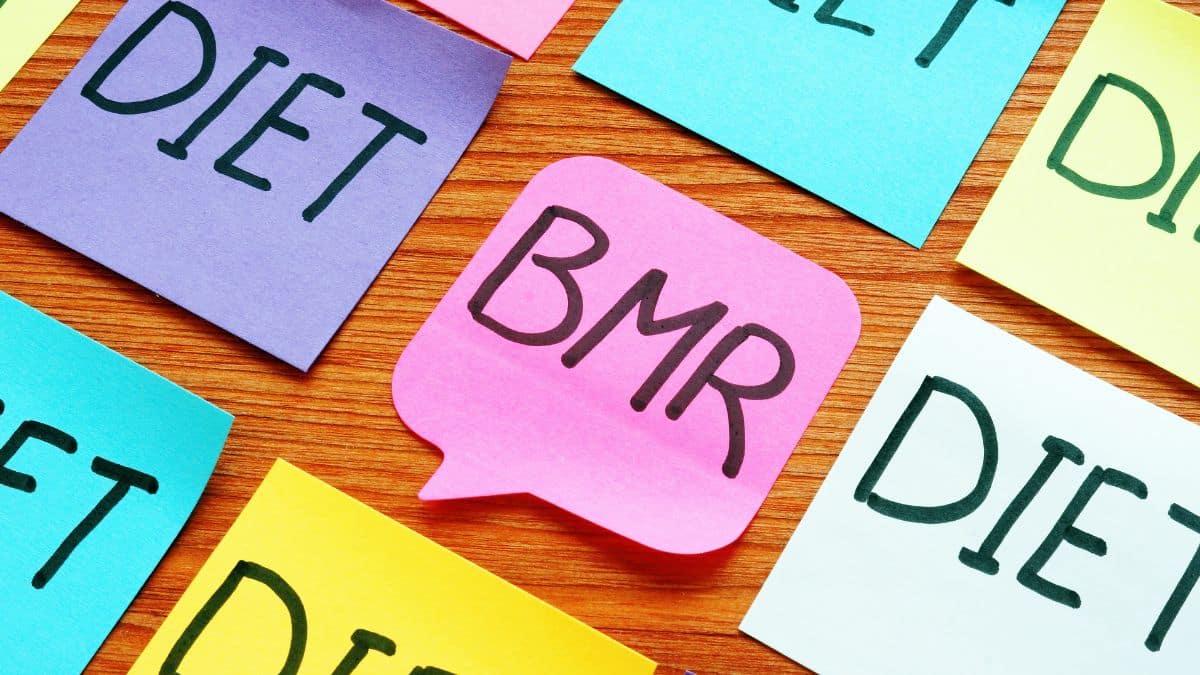If you’re trying to lose body fat, understanding your BMR (Basal Metabolic Rate) and how it relates to fat loss might be the single most important piece of math you need. While workouts and diet tweaks matter, nothing has a greater long-term impact on your fat loss than knowing how many calories your body burns at rest.
In this article, we’ll break down what BMR is, how to calculate it, and how to use it to create a fat loss plan that actually works—without starving yourself or overtraining.
What Is BMR?
BMR, or Basal Metabolic Rate, is the number of calories your body needs to maintain basic life functions at rest, such as:
- Breathing
- Circulating blood
- Maintaining body temperature
- Regenerating cells
- Fueling the brain
It’s essentially your minimum daily calorie requirement—the fuel your body needs to stay alive if you did absolutely nothing all day.
For most people, BMR accounts for 60–70% of total daily calorie expenditure.
How Do You Calculate BMR?
The most accurate BMR calculation uses the Mifflin-St Jeor Equation:
For Men:
BMR = 10 × weight (kg) + 6.25 × height (cm) – 5 × age (y) + 5
For Women:
BMR = 10 × weight (kg) + 6.25 × height (cm) – 5 × age (y) – 161
Example:
- Female, 40 years old
- 160 lbs (72.5 kg), 5’6″ (167.5 cm)
BMR = 10 × 72.5 + 6.25 × 167.5 – 5 × 40 – 161
BMR ≈ 1,438 calories/day
This means her body burns 1,438 calories at rest, before exercise or activity is factored in.
How Does BMR Affect Fat Loss?
To lose fat, you must create a calorie deficit—burning more than you consume. But here’s the catch: eat too little, and your body downshifts metabolism to protect itself.
That’s why knowing your BMR is crucial. It helps you:
- Avoid undereating, which causes muscle loss and metabolic slowdown
- Set a safe calorie target that supports fat loss and preserves lean mass
- Measure your progress accurately, using math not guesswork
Ideal Fat Loss Formula:
TDEE (Total Daily Energy Expenditure) = BMR × Activity Level
Fat Loss Target = TDEE – 300 to 500 calories
Estimate Your TDEE (Total Calories Burned Per Day)
Use your BMR to calculate your TDEE based on activity level:
| Activity Level | Multiplier |
|---|---|
| Sedentary (no exercise) | BMR × 1.2 |
| Lightly active (1–2x/week) | BMR × 1.375 |
| Moderately active (3–5x/week) | BMR × 1.55 |
| Very active (6–7x/week) | BMR × 1.725 |
Example (moderately active):
1,438 × 1.55 = 2,229 calories/day (TDEE)
Fat loss target = 2,229 – 400 = ~1,829 calories/day
This approach avoids metabolic crash and supports sustainable fat loss.
How to Use BMR in a Fat Loss Plan
Once you know your BMR and TDEE, you can:
✅ Set a Realistic Calorie Goal
Stay within 300–500 calories below TDEE for safe, consistent fat loss (0.5–1 lb/week).
✅ Track Macros Around BMR
- Protein: 1g per pound of bodyweight to preserve muscle
- Fats: ~20–30% of calories
- Carbs: Fill in the rest based on energy needs
✅ Adjust Weekly
Monitor your body weight, measurements, and energy. If fat loss stalls, recalculate your BMR every 10–15 lbs lost.
Can You Increase Your BMR?
Yes! While genetics play a role, several lifestyle strategies boost BMR over time:
- Build Muscle: 1 lb of muscle burns 6–10 calories/day at rest
- Strength Train: Stimulates muscle growth and hormonal balance
- Eat Enough Protein: Protein has the highest thermic effect of food (TEF)
- Sleep 7–9 Hours/Night: Sleep regulates metabolism and appetite hormones
- Stay Hydrated: Even mild dehydration slows BMR
- Avoid Extreme Dieting: Consistent undereating lowers BMR long-term
Tracking Progress Using BMR
Use your BMR as a reference point, not a rigid rule. Monitor:
- Weekly weight trends (not daily fluctuations)
- Waist and hip measurements
- How your clothes fit
- Energy and performance in workouts
If you’re plateauing, revisit your calorie target and adjust based on your new BMR and updated activity level.
Key Takeaways
- BMR is the number of calories your body burns at rest and forms the foundation of your fat loss plan.
- Knowing your BMR helps prevent metabolic slowdown, muscle loss, and diet frustration.
- Use the Mifflin-St Jeor formula to calculate BMR, then multiply by activity level to estimate TDEE.
- Create a modest calorie deficit (300–500 calories/day) for sustainable, long-term fat loss.
- Support BMR with strength training, sleep, protein, and hydration to keep your metabolism working for you.
Fat loss isn’t about suffering—it’s about strategy. And it all starts with knowing your BMR math.
Read Next…
- How to Use Resistance Bands to Build Full-Body Strength at Home
- What Is Your BMR and How Does It Affect Fat Loss?
- Backyard Gains: How a Clean Outdoor Space Motivates You
- How to Recover from Burnout Using Exercise and Faith
- Are Probiotics the Missing Link in Your Fat Loss Diet?
Subscribe now and get a 14-day free trial workout app for iPhone users.





